The rapid growth of Optical technology is altering the paradigm of communication networks, with optical transmission technology having a remarkable development with the 800G OSFP (Octal Small Formfactor Pluggable) optical transceiver. This transformative invention is aimed at countering the increasing demand for data, fuelled by the likes of 5G, cloud computing, and AI. We investigate the functionalities and characteristics of the 800G OSFP and its prospects of altering the data communication landscape through its improved bandwidth, power efficiency, and port density. The 800G OSFP explores requirements that categorically provide insight on emerging connectivity paradigms at the global level and define the role of high-speed internet globally.
What is the 800g OSFP Transceiver?
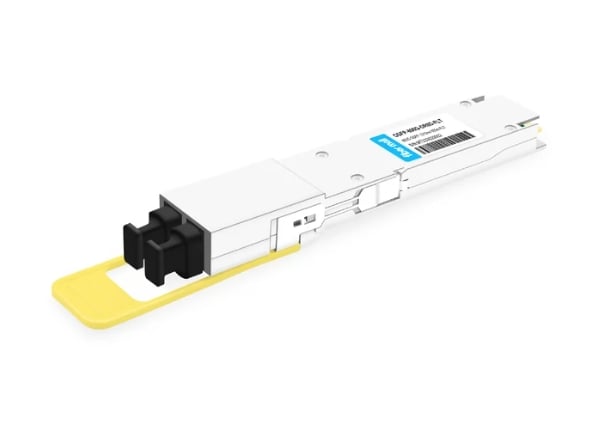
The 800G OSFP optical transceiver is a high-performance optical module targeting data centers and telecommunication networks, cupping the tremendous data rate requirements. The 800G OSFP transceivers are capable of transferring data at an astonishing rate of 800 gigabits per second with the help of modulation techniques that enhance the effectiveness of fiber optic links. The detailed design of the module focuses on dual-component integration, power economy, and optimized cooling design, which makes it appropriate for high-density settings. 800G OSFP meets the requirements of future high-speed applications through its advanced technology and great bandwidth.
Understanding the OSFP Form Factor
OSFP is the acronym for Octal Small factor pluggable, which was developed to ensure a scalable and functional optical transceiver design. With dimensions of 100mm by 22.58mm, the OSFP module encompasses eight electrical lanes, with each being able to support data transfer speeds of 100 gigabits per second, giving a combined throughput of 800 G. It is this achievement that aggravates the high data rates transmission through the use of PAM4 times signaling. This modulation method permits encoding several bits in a symbol in one channel so that more data can be sent.
The robust construction and design of the OSFP thermal interface enables efficient heat management, ensuring operation in required performance levels in high-density surroundings. It is also hot-pluggable, meaning it can be replaced without requiring the disconnection of the network. The OSFP form factor is complemented with a dual-mounted low-profile heatsinking configuration designed to assist in heat dissipation, hence improving the durability of the data centers as well as the telecommunications systems. The OSFP offers a combination of small size, high speed, and ease of management which favors its adoption in the building of future optical network systems.
The Role of PAM4 in 800g OSFP
PM4 is widely used to achieve high data rates for the 800 G OSFP. In contrast to an NRZ (Non-return-to-zero) coding scheme, which has two levels for a bit per symbol, PAM4 uses four amplitude levels, allowing more than one bit per symbol, thus allowing to achieve a two-bit encoding. This effectively means that the bandwidth efficiency is increased twofold, and each of the eight electrical lanes of the OSFP module can run at 100 Gbps. With PAM4, these issues are solved those required by networks operating speeds more modern in terms of data load as it is due to the multi-level PAM4 signaling technique that preserves the integrity of the signal at the same time, entire networks do not affect power consumption and heat dissipation. Thus, PAM4, the increased throughput requirements of OSFP, in essence, defines the trend of advanced optical transceiver technology in terms of performance and power efficiency.
Applications in Infiniband and Ethernet Networks
Using the PAM4 Modulation method, the 800G OSFP module is able to provide a sizeable boost to Infiniband and Ethernet networks. In all cases, the OSFP enhances the high bandwidths that infiniband has to increase for its use in high-performance computing and AI work. Ethernet networks, which are very large-scale, particularly enterprise and data center networks, deploy OSFPs for increased bandwidth as per the requirements of the data centers. Networks that utilize this technology can achieve high efficiency and effective performance in large-scale environments as they are able to transfer data without bottlenecks between widely dispersed networks. Further, the benefits of the OSFP are enhanced by ensuring compatibility to 800G Ethernet interfaces, which allows it to cater to a wide range of requirements.
How Does the 800g Optical Transceiver Work?
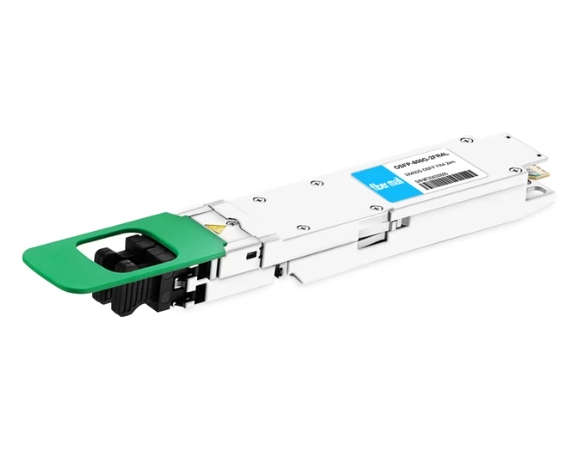
Principles of Optical Fiber Communication
Optical fiber communication systems can transmit information over long distances with little loss using light that is transmitted through flexible bundles of transparent threads, usually glass or skillfully engineered plastic. The general approach is to utilize a laser or an LED to convert electrical signals into optical ones. These optical signals are guided through the fiber core and bounce off the fiber’s cladding during total internal reflection as the fiber guides them. A photodetector at the output detects and reconverts the signals from optical form back to electrical form for further processing.
As a result of the high bandwidth of the light frequencies, information transmission across optical fibers is highly effective, with transmissions reaching speeds of up to hundreds of gigabits per second. This efficiency is improved further by multiplexing techniques, particularly Wavelength Division Multiplexing (WDM) that makes it possible to transmit more than one data channel over a single fiber using different wavelengths of light. This capability is crucial in meeting the increasing data requirements of today’s networks. Apart from this, the fact that they have low attenuation and that they are not susceptible to electromagnetic interference makes the optical fiber a favorable medium for large capacity long range communication. Studies show that optical fibers have attenuation values of up to 0.2 dB/km, which is quite ideal for long-distance communication as there will be little signal loss. These characteristics highlight the significance of optical fiber in the context of the increasing pace of development of global telecommunications.
The Impact of Multimode and Single-mode Fiber
The core diameter of Multimode and single-mode fibers exhibits both distinguishing aspects and morphology. Due to their large core diameter of 50- 62.5 micrometers, Multimode fibers are capable of allowing various modes of light to be transmitted through the fiber. However, this introduces a form of signal distortion called modal dispersion, which constrains the distance and bandwidth performance of such fibers. As a result, Such fibers are suitable for low data transmission over short distances which are within the building or campus. On the other hand, single-mode fibers have a smaller core, which has a diameter of about 8 to 10 micrometers. This allows for the transmission of light in one mode only, thus reducing the risk of modal dispersion. Because of this, single-mode fibers are capable of maintaining wideband performances over long distances, which are suitable for telecommunication, long-haul data, and high-speed networks. The users of both types of fibers have different needs in terms of telecommunication infrastructure while working together to increase the effectiveness and bandwidth of modern communication networks.
High-Speed Data Transmission with OSFP Modules
OSFP (‘Octal Small Form-factor Pluggable’) is a vital player in moving objects containing data around to different locations because the modern need for data centers is ever-increasing. These 200 Mbps-400 Mbps data transmitters consist of 8 channels, each with a frequency of 50 Gbps, and the peripheral speed is expanded through advanced technologies like PAM4 (4 Pulse Amplitude Modulation). OSFP is designed to include unique heat management features that allow for satisfactory thermal transfer no matter how dense the overpayment is, thus perfect for maximal efficiency and overall reliability. The modules are also capable of being hot-swappable, meaning they can easily be replaced or upgraded without impacting other elements of a system.
OSFP modules are capable of supporting up to 10 kilometers distance in total, meaning such attachments will be helpful for center-to-center attachments and interconnects. They can be used in other coupling forms, too, with the help of backward-compatible adapters. OSFPs have a light-based connection that meets relevant specifications and protocols, as in 400 GB E. Additionally, they provide two-way data communication. OSFP modules help quickly interchange large quantities of information and strengthen the quality of incoming information, thus achieving the expansion and development of high-quality centers conducive to cloud and data centers in the future.
Why Choose 800g OSFP for Your Data Center?
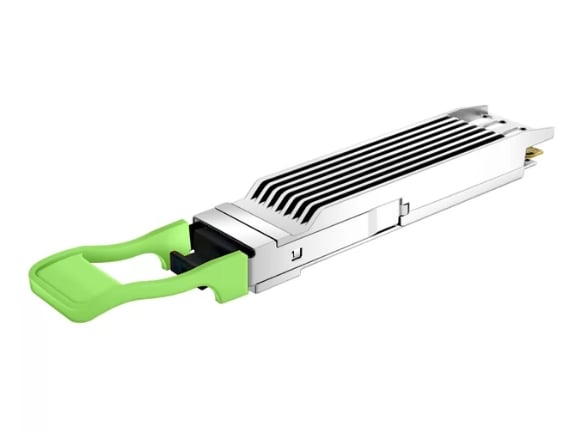
Compatibility with Existing Infrastructure
There are a few points and features that give assurance about seamless compatibility for 800G OSFP module integrations with the older systems. These include:
- Backwards Compatible Adapters: OSFP modules have attachments that provide OSFP modules with a backwards compatibility offering thus reducing the chance of hardware change to the newer equipment.
- Interoperability Standards: OSFPs are compliant with 802.3bs standard which are known and used in Ethernet networks facilitating easy integration.
- Hot Swap Facilities: With such modules, the network does not t have to be turned off for repairs or upgrades thus making it possible for maintenance to take place while the network continues operating.
- Flexible Optical Interface: With various networks that have different positions and rates the optical interface is made to funcion with OSFPs.
- Placement of thermal management systems: Adequately designed systems can integrate without additional expenses concerning changes in cooling systems.
- Enhanced Modulation Techniques: With existing fiber installation that were used PAM4, the data rates may be increased as there is more advanced infrastructure utilisation.
Therefore, bringing together all these factors, the 800G OSFP modules can be incorporated or incorporated into already existing data center installations with ease and much efficiency.
Benefits of High Performance and Scalability
The OSFP 800G modules are capable of being implemented in pre-existing structures, which, as a result, minimizes costs while enhancing scalability. Moreover, these modules are implemented with advanced techniques such as PAM4 for faster data modulation, which ensures complete utilization of the current cabling in place without the dire need to change them. Such performance guarantees the efficacy of data centers in performing their tasks at all times, regardless of the increasing workloads. In addition, the versatility of the 800G OSFP modules enables effortless growth so that future network requirements are met, thereby allowing the focus to be on the continued and aggressive advancement in technology. There is some shift in how organizations set planned expenditures because there is the capability of monetizing already made investments, but at the same time, there is an increase in the functional strength and flexibility of the network infrastructure.
Power Consumption and Efficiency
The real issue when deploying 800G OSFP modules into data centers is the associated power consumption and efficiency metrics. As per prominent sources, these modules have been crafted aiming for the delivery of data at a high rate while ensuring the minimum cost of the operation in relation to the power used, around the clock. New technologies of chips are embedded in the 800G module’s sophisticated design that lowers power consumption on each gigabit of read, thus making the energy used much more effective for the task. Also, efficient cooling solutions are integrated with heat dissipation functions, allowing for the quick elimination of heat, thus preventing the overheating of data center devices. By reducing energy consumption as much as possible during work, the company not only reduces the cost of its maintenance but also makes its activities more environmentally friendly and in line with the sustainability objectives.
Who are the Leading Manufacturers of 800g OSFP?
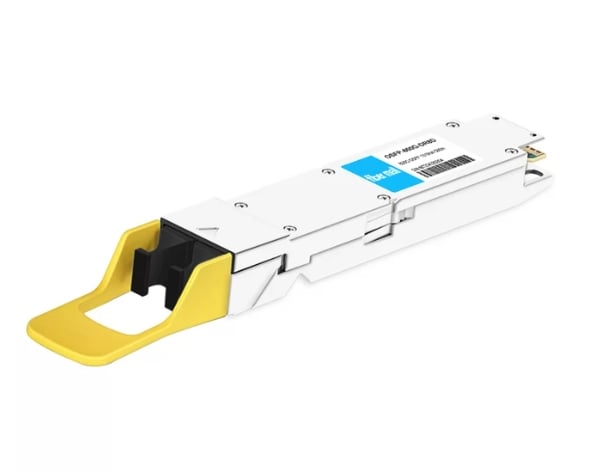
Innovations by Major Vendors
Notable experts in 800G OSFP modules, which are becoming more and more essential for bulk data processing and transfer, include Cisco, Intel, and Arista Networks, who appear to be collaborating. Cisco’s approach to OSFP modules emphasizes immediate installation compatibility and design flexibility, whereas Intel is pushing the boundaries in regard to data handling through enhanced integrated circuits. Meanwhile, Arista Networks is focused on high-end performance and high-quality modules that can operate in the harsh environments typical of modern data centers. The efforts of these companies are crucial in advancing the technologies that are now transforming the networks in various sectors.
Compliance with OSFP MSA Standards
In the case of the OSFP, the Multi-Source Agreement (MSA) establishes clear benchmarks enabling interoperability between optical modules. OSFP 800G module integration and operating performance will not be realized unless those benchmarks are maintained. A dataset necessary for compliance includes the following:
- Mechanical Specifications: The physical dimensions provided by the MSA must be adhered to ensure proper integration with all the compatible components available in the market.
- Thermal Management: The concepts and guidelines revolving around thermal dissipation should be followed with precision to ensure functioning temperature levels are achieved.
- Electrical Performance: Compliance to the standards set out with respect to signal integrity characteristics such as impedance and crosstalk, are needed so that information can be efficiently transmitted.
- Optical Performance: The new device has to meet the standards required in terms of a wavelength, output power, receiver sensitivity so that optical performance and reliability is assured.
- Protocol Support: Each of the devices has to be capable of operating with various n protocol networks making sure that they can work across a number of different platforms and systems.
Ensuring compliance with these OSFP MSA standards is crucial for manufacturers so that their modules can function within the modern CMOS data centers that require interoperability and high performance.
What are the Specifications and Applications of 800g OSFP?
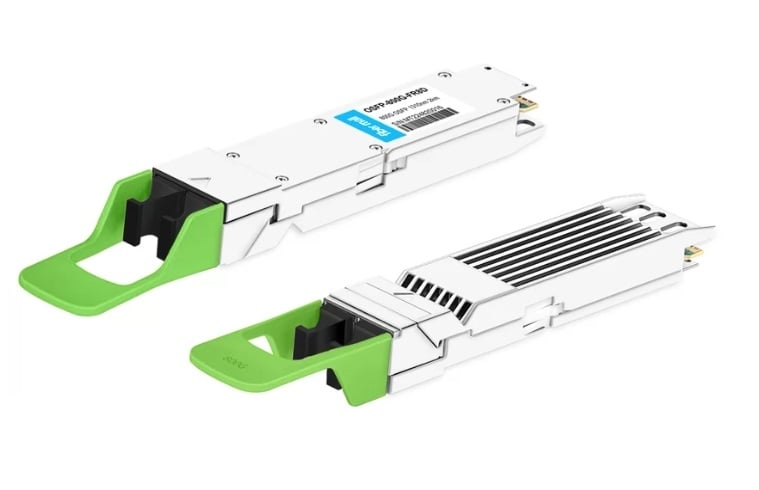
Key Technical Specifications to Know
The 800G OSFP modules have a plethora of technical traits that guarantee top-class engineering in the ecosystem of high-speed networks. These include:
- Data Rate: Ability to transfer information with a speed of 800 gigabits per second which improves the throughput of applications that have heavy demands.
- Modulation Format: Make use of PAM4 (Pulse Amplitude Modulation) that allows efficient encoding of data for high bit rates to be achieved with less complexity.
- Form Factor: Compatible with compact OSFP form factor which makes it possible to install the equipment on the contemporary network appliances which are space constrained.
- Power Consumption: Operates on an upper limit of 15 watts ensuring that the requirements of energy consumption regulation are met while offering the best performance of the module.
- Reach and Distance: In most cases, reach requirements may vary, and they include short-reach optics, which call for data center interconnects, and longer-reach, which enhances metropolitan area networks.
- Temperature Range: Functional in a range of between 0 and 70 degrees Celsius which enhances their reliability in lots and varied server room environments.
- Forward Error Correction (FEC): Contains built-in FEC ability for errors to be spotted and rectified, enhancing the quality of data over a transmission line.
- Connector Type: The LC or MPO connector is what is in use and this is robust and well known across the industry.
- Latency: Latency is reduced, and this is often required for various applications where data can be processed in real time with little or no delay.
- EMI shielding: Targets reducing electromagnetic interference, thereby increasing the integrity of signals in highly dense electronic spaces.
These specifications are carefully developed to fulfill the stringent requirements of advanced data networks with strong performance, diverse possibility of application, and proven functioning in different environments.
Diverse Application Scenarios in Modern Networks
In recent years’ communication paradigms have expanded by means of advanced module technologies, allowing for a greater diversity of application cases. These modules ensure the provision of fast data transmission and effective communication in a variety of environments. Centers and co-location services enhance intra-server links, thus reducing the time in which large volumes of data can be transferred between cloud, Big Data, and high-frequency transactions. For the telecommunications sector, they enable plug-play functions within the metro and long haul networks whilst providing wide coverage and good quality of signal. Furthermore, they are critical in enterprise networks, where the pressure for bandwidth is increasing, and applications such as video and voice-over IP are employed very effectively. So, such distinctive application cases highlight the fact that all of the modules are very flexible in terms of the underlying network infrastructures and emphasize their high significance in modern digital environments.
Reference Sources
Frequently Asked Questions (FAQs)
Q: What purpose does the 800g OSFP Optical Transceiver serve?
A: An 800g OSFP Optical Transceiver is a transmission device that allows conversion of signals to be transmitted at a speed of 800 gigabits every second. This is highly common with data centers and enterprise systems to improve connections and communication data systems in the future.
Q: What is the relationship between the Ethernet 800g and the OSFP transceivers?
A: 800g Ethernet transfers data every second in 800 gigabits. OSFP transceivers are needed, mostly 800g ones, to make these connections which are important as they lead to better bandwidth and performance in the infrastructures сетей.
Q: Suppose one compares 800 g single-mode and 800g multisided transceivers. What advantages does one have over the other in terms of ease of use?
A: Single mode fiber is always used for long distance transmission (over 2 km) and operates within 1310 nm light wavelength, whereas multi mode operates within 850 nm distance and is for short distance that is between 50 m to 500 m. Using the distance and the application you wish to find out determines the choice for SMF or MMF.
Q: Why would a passive SR4 configuration be beneficial in an optical transceiver?
A: Passive SR4 configurations in optical transceivers, such as in 800g solutions, are cost-effective and energy-efficient solutions for sending data over short links and do not need any extra power, or signal processing, so they are suitable for the rack-to-rack and inter-rack linkage. Also, passive SR-4 configurations in optical transceivers run networks efficiently.
Q: Can 800g transceivers work with older generation systems like 400g or 100g?
A: 800g transceivers can commonly be backward compatible with 400g or 100g older systems and this backward compatibility can be achieved through breakout configurations or adapters so that the newer version can work with an older one without having major overhauls of the existing network. This configuration would mostly work with adapters and other plug systems.
Q: How is CMIS 5.0 relevant to the functioning of 800g transceivers?
A: Regarding 800G transceivers, CMIS 5.0 or Common Management Interface Specification specifies what must be included in the transceiver modules for proper communication. Therefore, CMIS 5.0 improves interoperability and integration of transceivers into more network environments.
Q: What role does the OSFP finned top design play in transceiver performance?
A: With an OSFP finned top design, heat flow becomes more efficient, which is critical for the smooth functioning and reliability of high-speed transceivers like the 800g OSFP. The design minimizes overheating and discrepancies when transferring data.
Q: For instance, in the case of shipping to the United Kingdom, what features should be kept in mind while shipping and delivering 800g transceivers?
A: In order to ship the 800g transceivers overseas, it is important to keep in mind the necessary paperwork, the time of delivery, and appropriate packing in order to protect the modules. Companies like fs.com provide services that assist with these shipping requirements.
Q: How does the breakout functionality extend the network options available with 800g transceivers?
A: Breaking out function enables an 800g transceiver to take its single, high capacity output and channel it into a few low capacity channels instead, for example: the output can be divided into 2x400g or 8x100g links. This function is advantageous for a variety of expanding constructions and improves its usage considering the existing infrastructure possibilities.
Related Products:
-
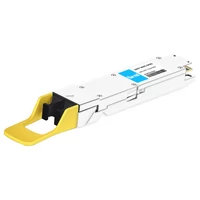 OSFP-800G-DR8D 800G-DR8 OSFP PAM4 1310nm 500m DOM Dual MTP/MPO-12 SMF Optical Transceiver Module
$1100.00
OSFP-800G-DR8D 800G-DR8 OSFP PAM4 1310nm 500m DOM Dual MTP/MPO-12 SMF Optical Transceiver Module
$1100.00
-
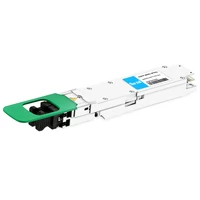 OSFP-800G-2FR4L OSFP 2x400G FR4 PAM4 1310nm 2km DOM Dual Duplex LC SMF Optical Transceiver Module
$1350.00
OSFP-800G-2FR4L OSFP 2x400G FR4 PAM4 1310nm 2km DOM Dual Duplex LC SMF Optical Transceiver Module
$1350.00
-
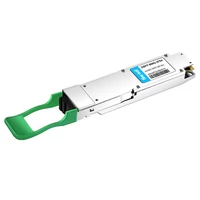 OSFP-800G-2FR4 OSFP 2x400G FR4 PAM4 CWDM4 2km DOM Dual CS SMF Optical Transceiver Module
$3500.00
OSFP-800G-2FR4 OSFP 2x400G FR4 PAM4 CWDM4 2km DOM Dual CS SMF Optical Transceiver Module
$3500.00
-
 OSFP-800G-SR8 OSFP 8x100G SR8 PAM4 850nm MTP/MPO-16 100m OM4 MMF FEC Optical Transceiver Module
$750.00
OSFP-800G-SR8 OSFP 8x100G SR8 PAM4 850nm MTP/MPO-16 100m OM4 MMF FEC Optical Transceiver Module
$750.00
-
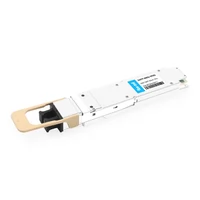 OSFP-800G-SR8D OSFP 8x100G SR8 PAM4 850nm 100m DOM Dual MPO-12 MMF Optical Transceiver Module
$750.00
OSFP-800G-SR8D OSFP 8x100G SR8 PAM4 850nm 100m DOM Dual MPO-12 MMF Optical Transceiver Module
$750.00
-
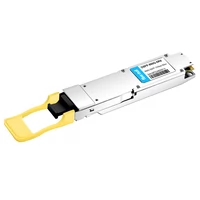 OSFP-800G-DR8 OSFP 8x100G DR PAM4 1310nm MPO-16 500m SMF DDM Optical Transceiver Module
$1100.00
OSFP-800G-DR8 OSFP 8x100G DR PAM4 1310nm MPO-16 500m SMF DDM Optical Transceiver Module
$1100.00
-
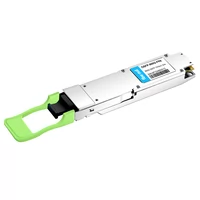 OSFP-800G-FR8 OSFP 8x100G FR PAM4 1310nm MPO-16 2km SMF Optical Transceiver Module
$1300.00
OSFP-800G-FR8 OSFP 8x100G FR PAM4 1310nm MPO-16 2km SMF Optical Transceiver Module
$1300.00
-
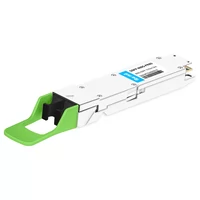 OSFP-800G-FR8D OSFP 8x100G FR PAM4 1310nm Dual MPO-12 2km SMF Optical Transceiver Module
$2000.00
OSFP-800G-FR8D OSFP 8x100G FR PAM4 1310nm Dual MPO-12 2km SMF Optical Transceiver Module
$2000.00
-
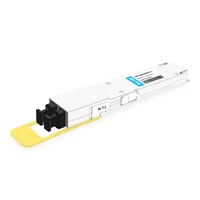 OSFP-800G-DR8D-FLT 800G-DR8 OSFP Flat Top PAM4 1310nm 500m DOM Dual MTP/MPO-12 SMF Optical Transceiver Module
$1200.00
OSFP-800G-DR8D-FLT 800G-DR8 OSFP Flat Top PAM4 1310nm 500m DOM Dual MTP/MPO-12 SMF Optical Transceiver Module
$1200.00
-
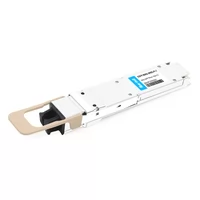 OSFP-800G-SR8D-FLT OSFP 8x100G SR8 Flat Top PAM4 850nm 100m DOM Dual MPO-12 MMF Optical Transceiver Module
$850.00
OSFP-800G-SR8D-FLT OSFP 8x100G SR8 Flat Top PAM4 850nm 100m DOM Dual MPO-12 MMF Optical Transceiver Module
$850.00
-
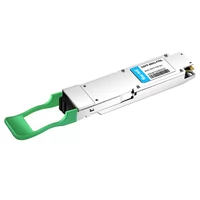 OSFP-800G-FR8L OSFP 800G FR8 PAM4 CWDM8 Duplex LC 2km SMF Optical Transceiver Module
$4500.00
OSFP-800G-FR8L OSFP 800G FR8 PAM4 CWDM8 Duplex LC 2km SMF Optical Transceiver Module
$4500.00
-
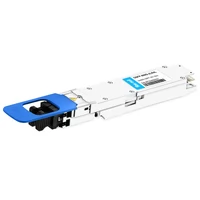 OSFP-800G-2LR4L OSFP 2x400G LR4 PAM4 CWDM4 Dual duplex LC 10km SMF Optical Transceiver Module
$3700.00
OSFP-800G-2LR4L OSFP 2x400G LR4 PAM4 CWDM4 Dual duplex LC 10km SMF Optical Transceiver Module
$3700.00
